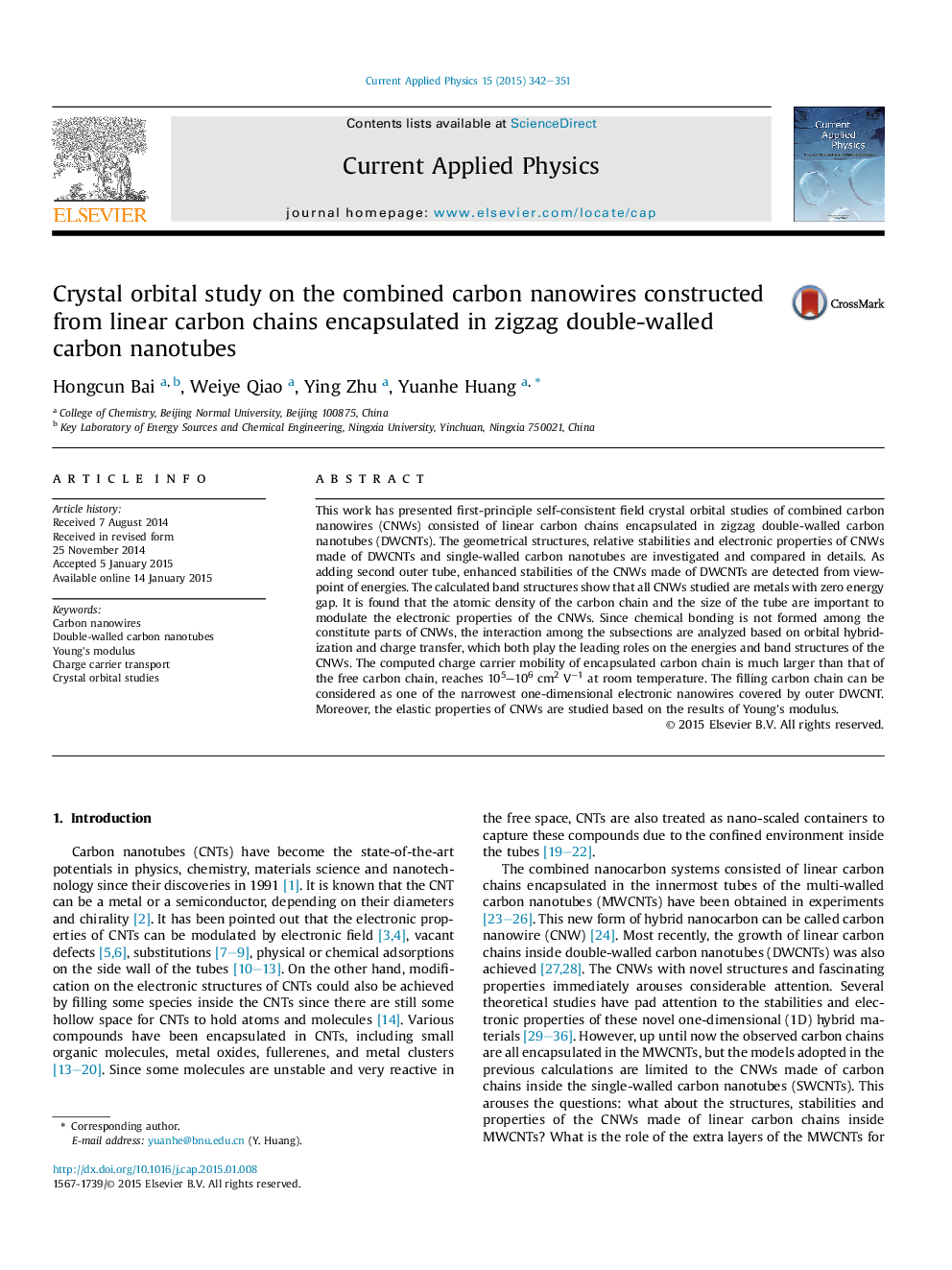| Article ID | Journal | Published Year | Pages | File Type |
|---|---|---|---|---|
| 1785702 | Current Applied Physics | 2015 | 10 Pages |
•Adding the second tube layer is favorable to the stability of carbon nanowire.•The chain atomic density and the tube size are important to modulate the electronic properties of the carbon nanowire.•The carbon nanowire should be good candidates of novel 1D transport materials with high charge carrier mobility.
This work has presented first-principle self-consistent field crystal orbital studies of combined carbon nanowires (CNWs) consisted of linear carbon chains encapsulated in zigzag double-walled carbon nanotubes (DWCNTs). The geometrical structures, relative stabilities and electronic properties of CNWs made of DWCNTs and single-walled carbon nanotubes are investigated and compared in details. As adding second outer tube, enhanced stabilities of the CNWs made of DWCNTs are detected from viewpoint of energies. The calculated band structures show that all CNWs studied are metals with zero energy gap. It is found that the atomic density of the carbon chain and the size of the tube are important to modulate the electronic properties of the CNWs. Since chemical bonding is not formed among the constitute parts of CNWs, the interaction among the subsections are analyzed based on orbital hybridization and charge transfer, which both play the leading roles on the energies and band structures of the CNWs. The computed charge carrier mobility of encapsulated carbon chain is much larger than that of the free carbon chain, reaches 105–106 cm2 V−1 at room temperature. The filling carbon chain can be considered as one of the narrowest one-dimensional electronic nanowires covered by outer DWCNT. Moreover, the elastic properties of CNWs are studied based on the results of Young's modulus.
Graphical abstractFigure optionsDownload full-size imageDownload as PowerPoint slide
